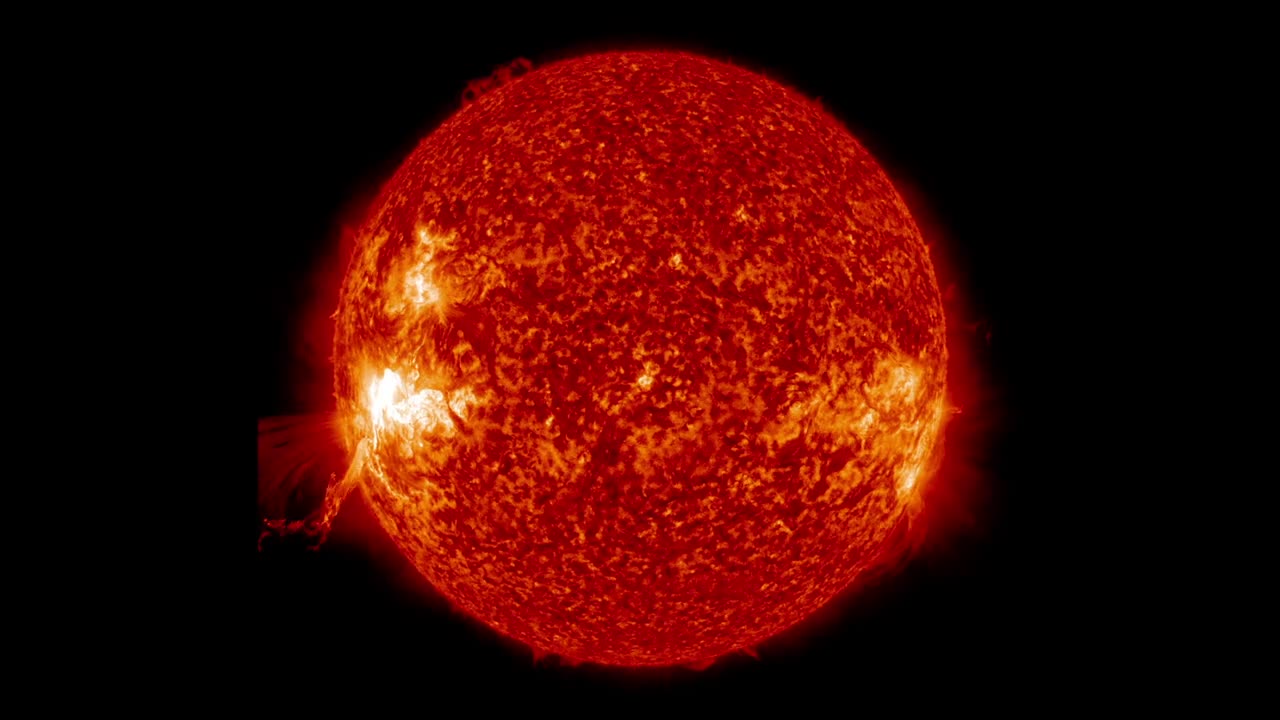Premium Only Content

Sun Solar Flares Solar Ultraviolet SDO Solar Dynamics
On Jan 30, 2014, beginning at 8:31 a.m EST, the moon moved between NASA’s Solar Dynamics Observatory, or SDO, and the sun, giving the observatory a view of a partial solar eclipse from space. Such a lunar transit happens two to three times each year. This one lasted two and one half hours, which is the longest ever recorded. When the next one will occur is as of yet unknown due to planned adjustments in SDO's orbit.
Note in the pictures how crisp the horizon is on the moon, a reflection of the fact that the moon has no atmosphere around it to distort the light from the sun.
The sun emitted a mid-level solar flare, peaking at 11:11 a.m. EST on Jan. 30, 2014. Images of the flare were captured by NASA's Solar Dynamics Observatory, or SDO, shortly after the observatory witnessed a lunar transit. The black disk of the moon can be seen in the lower right of the images
-
 22:02
22:02
Mrgunsngear
18 hours ago $6.29 earnedHeckler & Koch Full Size VP9A1 F Review: The Best Striker Fired Duty Handgun?
18.3K17 -
 LIVE
LIVE
Gore TV
4 hours ago🔥💥 MY GUN BROKE MID-FIGHT?! 🤯💣 | Division 2 Chaos with a Toy Rifle 😂🔫
163 watching -
 17:14
17:14
JapaNomad - Video Tours
3 days ago $2.49 earnedNissan GT-R R35 2AM Tokyo Expressway Run | Pure Car ASMR | No Music | No Voice | 4K HDR
24.8K5 -
 27:35
27:35
NordicVentures
7 days ago $1.23 earned3 Days Solo on a Island: How to Build a Simple Beach Shelter!
12.1K6 -
![LIVE Replay - Back from the Beginning! [Elden Ring]](https://1a-1791.com/video/fww1/3e/s8/1/W/K/Z/3/WKZ3y.0kob.1-small-Back-from-the-Beginning-Eld.jpg) 2:06:54
2:06:54
JTtheSG
3 hours agoLIVE Replay - Back from the Beginning! [Elden Ring]
13.5K -
 LIVE
LIVE
Barneyjack
2 hours agoWarframe LR$/MR34 Game and Giveaways!! Get in here :) :)
96 watching -
 1:46:49
1:46:49
Survival Dispatch
6 days agoThe REAL Truth About Media's Terrorism Coverage vs Reality EP534
23.8K5 -
 2:21:28
2:21:28
Pepkilla
3 hours agoCall of Duty Warzone ~ BOT RUNNING
8.83K -
 1:05:12
1:05:12
Greg Hunter's USAWatchdog.com
23 hours ago100% Chance of Nuclear War – Martin Armstrong
65K56 -
 2:21:13
2:21:13
Tundra Tactical
18 hours ago $9.40 earned"The World's Okayest Gun Live Stream: Reloading Series Announcement & ATF Pistol Brace is Dead
53.2K4